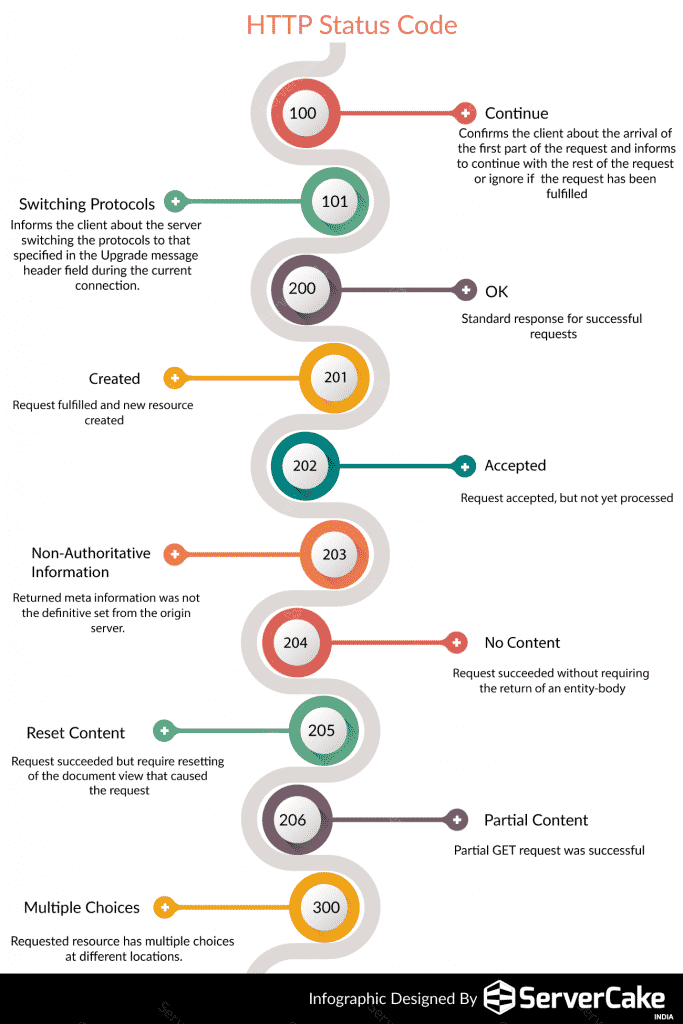HTTP status codes are extensible and HTTP applications cannot understand the meaning of all registered codes. The status code is a three digit integer in which the first digit represents the class of response and the last two digits do not have any categorization role.
If a website is requested by the user, the system will request the data from a server through HTTP. The status code provides the information about the status of the request. A list of status codes are described below
Code 100:
The code 100 means continue. This code confirms the first part of the request from the user.
Code 101:
The code 101 means Switching Protocols. This code informs that the requester has asked to switch protocols and the server will agree for that.
Code 200:
The code 200 means OK. It is a standard response for a successful HTTP request. It depends on the request method.
Code 201:
The code 201 means Created. This code fulfills the request and creates a new resource.
Code 202:
The code 202 means Accepted. This code accepts the request but the process will not be completed.
Code 203:
The code 203 means Non-Authoritative Information. This code returns meta information from the original server.
Code 204:
The code 204 means No content. This code proceeds the request but will not return any content.
Code 205:
The code 205 means Reset Content. This code proceeds the request but it resets the documents that cause a request.
Code 206:
The code 206 means Partial Content. This code delivers only a part of the resource due to a range header sent by the user.
Code 300:
The code 300 means Multiple choices. This code indicates multiple options for a resource requested by the user.

